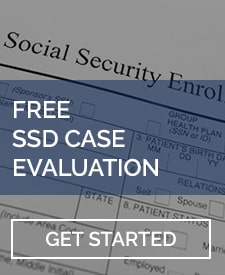Many Americans suffer from cerebral vascular accidents each year. Cerebral vascular accidents, or strokes, occur when there is damage to the brain from an interruption in the blood supply. This is a medical emergency requiring immediate medical attention. If left untreated, an individual having a stroke will likely not survive. Symptoms of a stroke include difficulty walking, speaking, and understanding. Other symptoms include paralysis or numbness of the face, arm, or leg.
Hemorrhagic or Ischemic Stroke

The average hospital stay for a stroke is between four and seven days. Stroke survivors are then generally transferred to an inpatient rehabilitation facility or skilled nursing facility to help facilitate the recovery process. Either stroke can cause lasting damage in terms of mobility, speech, and comprehension. Improvement through skilled therapy can happen for the individual very quickly or may take several years. For some, deficits in communication and/or mobility are permanent. In those instances, occupational therapy is used to help accommodate the limitations. Approximately 10% of people recover almost completely, with 25% recovering with only minor impairments. Approximately 40% experience moderate to severe limitations requiring special care, with the other 25% not surviving. Some of the major risk factors for stroke include high blood pressure, diabetes, heart disease, smoking, age, race, and family history.
SSD Eligibility for Stroke Survivors
If you are among those stroke survivors who are one of the unfortunate 40% who still experience moderate to severe impairments resulting from the stroke, you are likely eligible for social security disability (SSD) benefits. Applying for disability benefits is easy. It can be done through an online application, over the phone, or even in person. What is not easy is proving you are disabled. To receive disability benefits, the social security administration (SSA) must find that you meet its definition of disability. Generally, you must prove you are or are expected to be, unable to perform work for a 12-month time frame due to a severe physical and/or mental impairment.
Proving Disability Is Not Easy (Even for Cerebral Vascular Accidents)
While this process is not supposed to be adversarial — meaning, the SSA is supposed to be unbiased — the SSA does take its job as a gatekeeper very seriously. In doing so, the SSA does not make it easy to be found to be disabled. To ensure your application is properly supported and reviewed appropriately, you should enlist the help of an experienced disability attorney. Your attorney will walk you through the process while acting as an advocate with the SSA.

The third stage in the analysis considers whether you meet or equal one of the SSA’s listed impairments. The SSA has a list of medical conditions deemed to be so severe as to automatically qualify you for disability benefits. To prove you meet or equal one of the listings, you must have medical evidence documenting the condition. Stroke survivors are evaluated under listing 11.04 for the vascular insult to the brain. This listing requires you to show one of three things. First, you could show a sensory or motor aphasia resulting in ineffective speech or communication persisting for at least three consecutive months after the insult. Second, you could show disorganization of motor function in two extremities resulting in an extreme limitation in the ability to stand up from a seated position lasting for at least three months. Or third, you could show marked limitation in physical functioning and in one of the following mental areas of understanding, interacting, concentrating, or adapting. These requirements will be proven through medical treatment, specifically through your rehabilitation efforts. Without rehabilitation or treatment after the stroke, it will be impossible to prove you meet this listing.
If you are found not to meet a listing, then the next consideration would be whether you are able to perform your past relevant work, and if not, if there is other work you could perform in the national economy. Determining whether you can perform your past relevant work requires a finding of what you are capable of, both physically and mentally. This is called your residual functional capacity (RFC). Your RFC will be used to determine if you are capable of your past work. If not, the SSA will consider whether there is other work you could perform that exists in significant numbers in the national economy. If you are determined unable to perform past work or any other type of work, you will be found disabled.
Continuing to Receive Treatment
Once found disabled, you will need to continue to receive medical treatment. This is because the SSA may perform what is called a continuing disability review of your claim. Just because the SSA determines you to be disabled, it does not mean that your disability is considered to be permanent. In fact, the purpose of the disability program is to provide you financial support as well as medical benefits so that you can recover enough to get back to work. The SSA will generally perform a continuing review of your claim within three years of being found disabled. Because of that reason, it is important for stroke survivors to continue to receive treatment for their medical conditions.




